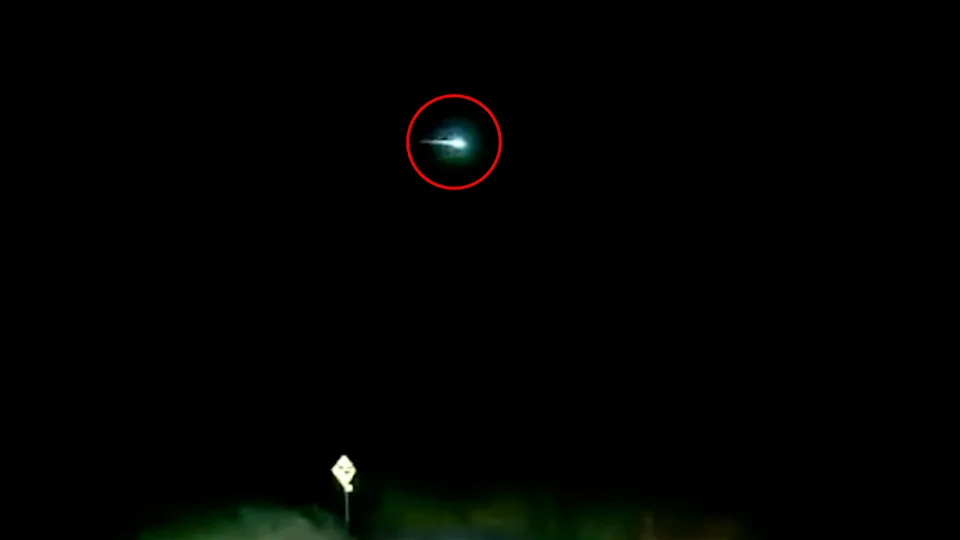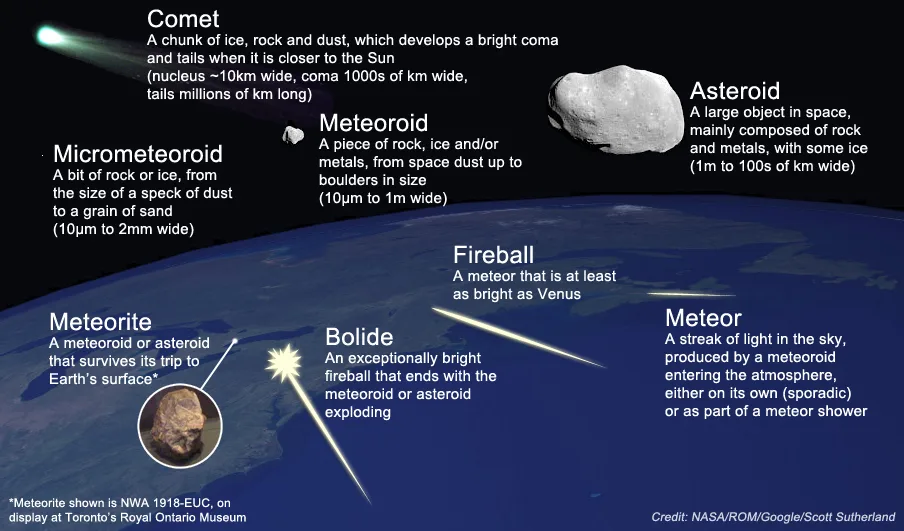
Bright green fireball wows as it blazes over Ireland
Dozens spotted this bright meteor flashing through the night sky
Skywatchers across the United Kingdom and Ireland were treated to a rare event Monday night.
At just before 7 p.m. local time, a bright green meteor fireball was spotted flashing across the night sky.
As of Tuesday morning, over 40 reports were logged with the American Meteor Society (AMS), which catalogues fireball activity around the world.
According to the AMS, based on an analysis of the trajectories logged in those reports, the meteor started over St. George's Channel and flew to the northwest, passing directly over Wexford and Kilkenny, before winking out north of Templemore.

Heat map of observer reports for AMS event #5299-2019, with fireball trajectory, as of October 29, 2019. Credit: American Meteor Society
It is notoriously tricky to catch meteors and fireballs on camera, due to the speed at which they pass by overhead, and the limitations on human reaction time. Thanks to the increasing use of dashcams, however, we can actually see this fireball.
One report from Allan White included a dashcam video shot from a vehicle travelling southeast along the North Wales Expressway, between Mochdre and Llandudno Junction, UK.
Another dashcam video, recorded by Stephen J. as he drove down A499, along the coast of Wales, captured it from a similar angle.
WHAT'S HAPPENING HERE?
These bright flashes of light across the sky are known as meteors.
They occur when a meteoroid - a bit of rock or ice in space - gets directly in Earth's path as our planet orbits around the Sun.
The meteoroid plunges into the atmosphere travelling at speeds of anywhere from 40,000 km/h to 260,000 km/h. As it flies through the air, getting deeper and deeper into the atmosphere, it compresses the air in its path very rapidly, which causes the air to heat up so much that it glows. This produces the meteor flash of light that we see in the sky.

The larger the meteoroid, the faster it is going and the tougher the material it is made of, the brighter it will flash and the longer the meteor will last.
The colour of the meteor often depends on the composition of the meteoroid, with green being a good indication that it is at least partially made of nickel.
During the meteoroid's bright passage through the sky, two things occur simultaneously: 1) It slows down due to the pressure of the air it is pushing against, and 2) it is scorched by the intense incandescent heat of the compressed air.
The meteor light winks out when either a) the intense heat burns away the entire meteoroid, or b) the meteoroid slows down to a speed of just a few hundred kilometres per hour (terminal velocity), where the air in the meteoroid's path is no longer compressed enough to incandesce.
Anything that survives to this point will then enter its "dark flight" mode. This is where the meteoroid is merely falling out of the sky on a ballistic trajectory, travelling at terminal velocity, and it will eventually hit the ground travelling at around 300-600 km/h.
At this point, any pieces of the meteoroid left are called meteorites.
Meteorites are not easy to spot for untrained eyes. Typical meteorites aren't large enough or travelling fast enough to produce a crater when they hit. Also, although they are heated during their brief passage through the air, their cores can be intensely cold from being in the vacuum of space, so they're more likely to be coated in a layer of frost than they are to explode or start fires.
They are often identified by the black 'fusion crust' that the intense heat scorches into their surface. If it broke apart before it hit, or as it hit, there may be a mix of dark fusion crust and bright exposed surface. Often meteorites will stick to a magnet (even a typical refrigerator magnet) due to their high iron content.
Will this fireball have produced meteorites? It's possible!
If anything did reach the ground, it would probably be somewhere past the end of the AMS trajectory, perhaps in County Offaly or County Tipperary.
Source: AMS
